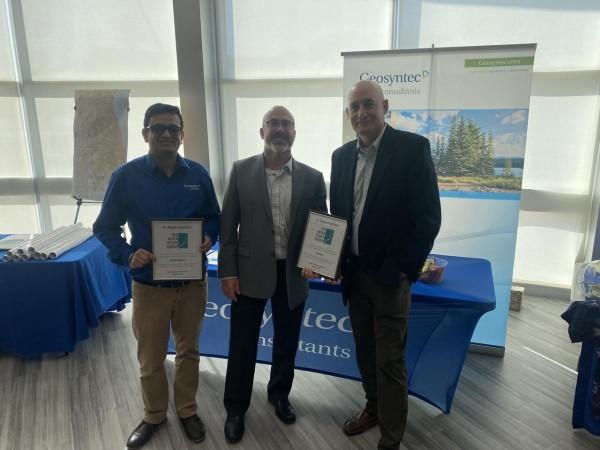
The Fox River runs nearly 100 miles through Illinois, serving as a source of drinking water, recreation, and economic activity for more than 300,000 residents. For decades, it has carried another burden: excess nutrients, including nitrogen and phosphorus, fueling algal blooms, suffocating fish, and raising treatment costs for municipalities. A study led by Board Certified Rishab Mahajan found that targeted dam removals could allow the river to flush pollutants more effectively, potentially saving communities an estimated $145 million compared to conventional wastewater treatment plant upgrades. The Fox River Implementation Plan, developed by Mahajan's team, marked a turning point in how engineers and policymakers approach water quality. "Traditional methods of nutrient reduction often focus on end-of-pipe solutions, but we discovered that addressing root causes through targeted infrastructure changes could be far more effective," he explains. His team's modeling revealed that dams were trapping pollutants and amplifying algal growth. Removing key barriers allowed the river to flush nutrients naturally, a strategy that would be cheaper and more sustainable than conventional plant upgrades.
The Science Behind the Breakthrough
Nutrient pollution is a national problem. Fertilizers, wastewater, and stormwater runoff push nitrogen and phosphorus into waterways throughout the Midwest, creating the conditions for widespread algal blooms. These blooms deplete oxygen, generate toxins, and weaken ecosystems.
Mahajan's team resisted the default recommendation of expensive wastewater treatment plant upgrades. Instead, they showed that dam removal could restore the river's ability to cleanse itself. When presented to the Fox River Study Group, the idea drew skepticism, but the data spoke clearly: dam removal would achieve better results at a fraction of the cost. "The modeling showed the river itself could become part of the solution," Mahajan recalls.
Recognition on the Local and National Stage
Mahajan was awarded a Certificate of Appreciation by the Fox River Study Group for his contributions in guiding the region towards a cleaner, safer, and more beautiful river. Mahajan's work on this important issue has been recognized on the national stage. From 2018 to 2023, he presented annually at the Water Environment Federation Technical Exhibition and Conference (WEFTEC), the world's largest water quality event, drawing more than 21,000 professionals from over 30 countries. His sessions on watershed permitting, stakeholder engagement, and nutrient reduction strategies have been peer-reviewed by over 150 experts, underscoring both technical rigor and practical application.
His influence extends through leadership. As Vice Chair of WEF's Watershed Management Committee, Mahajan reviews technical proposals and moderates panels that shape national practice. He also co-authored the WEF manual Stormwater, Watershed, and Receiving Water Quality Modeling (2023), a key reference for professionals facing urban stormwater challenges. Dr. Chein-Chi Chang, a former WEF Watershed Management Chair and recipient of the prestigious WEF Bedell Award for extraordinary personal service, has praised the publication, stating:
"This manual is an excellent publication for providing the water industry professionals knowledge of modeling urban stormwater quality and receiving water quality. This manual discusses the regulation and management of the water environment, model selection, and models of the future. As the Water Environment Federation Watershed Management Committee Chair, I recommend this publication to be considered as the textbook and/or reference of watershed management."
Expanding Impact Nationwide
The Fox River model has served as a reference for numerous communities. Mahajan has subsequently directed similar plans for a range of municipalities and public utilities nationwide, including Boone County, DuPage County, San Diego County, the Sangamon County Water Reclamation District, the Des Plaines River Watershed Group, the Metropolitan Water Reclamation District of Greater Chicago, and the Sanitary District of Decatur, among others. Each plan adopts a watershed-scale perspective, guiding regulators and communities away from fragmented methods in favour of comprehensive, system-wide solutions.
The results go beyond cleaner rivers. Reduced treatment costs, stronger local economies built on recreation and tourism, and avoided penalties for water quality violations have made nutrient reduction a shared community and financial gain. "The most rewarding aspect of this work is seeing communities realize that environmental protection and economic development can advance together," Mahajan notes. His approach, combining advanced modeling, regulatory innovation, and collaborative planning, has already reshaped watershed management and offers a model for tackling one of the most pressing environmental concerns of our time.

















